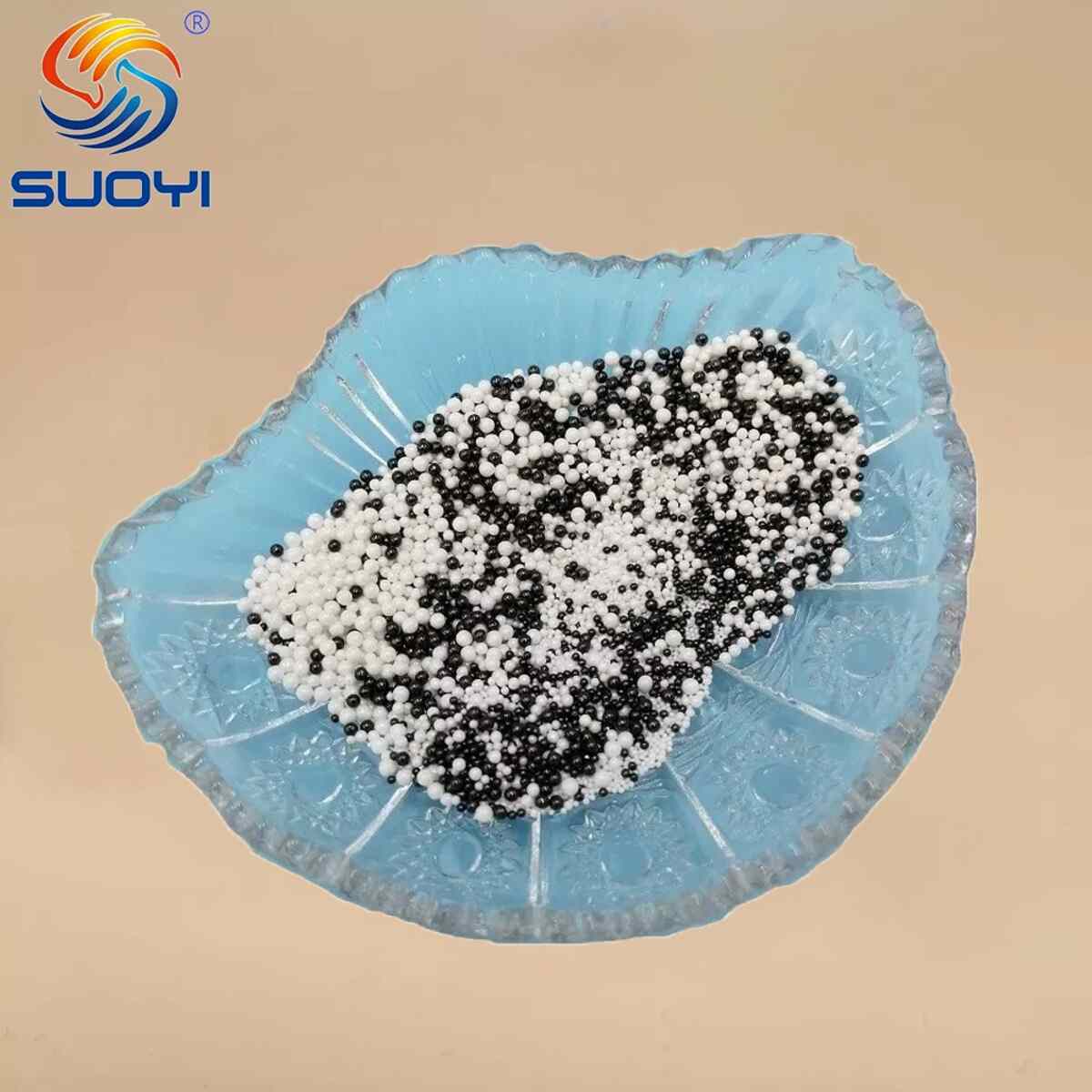Introduction
Silicate zirconium is a crucial material used extensively in ceramics, glass production, and various industrial applications due to its high resistance to heat and corrosion. In China, the output of Silicate Zirconium in China plays a significant role in the industrial sector, contributing to the country’s economic growth. However, the production process involves various chemical reactions and the handling of hazardous materials, making environmental and safety standards essential to ensure sustainable and safe manufacturing practices.
The importance of adhering to stringent environmental and safety standards cannot be overstated. These standards not only protect human health and the environment but also ensure compliance with international norms, thereby maintaining market access and competitiveness for Chinese manufacturers. This article explores the comprehensive environmental and safety standards governing the production of silicate zirconium in China, examining the regulatory framework, specific standards, compliance measures, and future trends in the industry.
Regulatory Framework in China
China’s regulatory framework for the production of Silicate Zirconium in China involves multiple government agencies and a robust set of laws and policies designed to manage environmental impacts and ensure workplace safety.
Government Agencies and Bodies
Ministry of Ecology and Environment (MEE): The MEE is responsible for formulating environmental policies, monitoring ecological protection measures, and ensuring compliance with environmental laws.
State Administration of Work Safety (SAWS): SAWS oversees workplace safety regulations, ensuring that industries adhere to safety standards to prevent accidents and occupational hazards.
Key Legislation and Policies
Environmental Protection Law: This fundamental law outlines the general principles for environmental protection, including pollution prevention and control, resource conservation, and ecological protection.
Work Safety Law: This law establishes the framework for ensuring workplace safety, including provisions for preventing accidents, protecting workers’ health, and responding to emergencies.
Specific Regulations Related to Chemical Production: These include guidelines and standards for the production, handling, and disposal of chemicals, with the goal of minimizing environmental impact and ensuring safety.
Environmental Standards
Environmental standards in the production of Silicate Zirconium in China are designed to minimize pollution and resource consumption, ensuring sustainable production practices.
Emission Control
Air Quality Standards: Regulations stipulate the permissible levels of pollutants that can be emitted into the air, including sulfur dioxide (SO2), nitrogen oxides (NOx), and particulate matter (PM). Industrial facilities must install emission control equipment and regularly monitor air quality.
Regulations on Industrial Emissions: These regulations require manufacturers to adopt the best available technologies (BAT) to reduce emissions and implement continuous emission monitoring systems (CEMS) to ensure compliance.
Monitoring and Reporting Requirements: Facilities must regularly report their emissions data to regulatory bodies, ensuring transparency and accountability.
Waste Management
Treatment and Disposal of Solid and Hazardous Waste: Regulations mandate proper segregation, treatment, and disposal of solid and hazardous waste. This includes using licensed disposal facilities and adhering to strict protocols to prevent environmental contamination.
Recycling and Resource Recovery Initiatives: Encouraging the recycling of by-products and the recovery of valuable materials from waste streams is essential for reducing environmental impact and enhancing resource efficiency.
Water Use and Pollution
Standards for Water Discharge: Effluent discharge standards specify the maximum allowable concentrations of pollutants in wastewater. Facilities must treat wastewater to meet these standards before discharge.
Wastewater Treatment Requirements: Manufacturers are required to install and operate wastewater treatment plants (WWTPs) to remove contaminants from industrial effluents and ensure that discharged water meets environmental quality standards.
Soil and Groundwater Protection
Measures to Prevent Contamination: Regulations require facilities to implement measures to prevent soil and groundwater contamination, such as using impervious liners and secondary containment systems.
Remediation Standards for Contaminated Sites: In the event of contamination, stringent remediation standards must be followed to restore affected sites to acceptable environmental conditions.
Safety Standards
Safety standards in the production of Silicate Zirconium in China focus on protecting workers and preventing accidents through comprehensive occupational health and safety measures.
Occupational Health and Safety Regulations
Workplace Safety Requirements: Regulations mandate the implementation of safety management systems, regular safety audits, and risk assessments to identify and mitigate potential hazards.
Health Monitoring and Risk Assessments: Regular health checks and exposure assessments are required to monitor workers’ health and ensure that occupational exposure limits are not exceeded.
Handling and Storage of Hazardous Materials
Safety Protocols for Storage and Transport: Guidelines dictate the safe storage and transportation of hazardous materials, including proper labeling, secure containment, and adherence to transportation safety regulations.
Emergency Response Procedures: Facilities must develop and implement emergency response plans to address accidents involving hazardous materials, including training for workers and coordination with local emergency services.
Employee Training and Education
Safety Training Programs: Regular training programs are required to educate workers on safety procedures, hazard identification, and proper use of personal protective equipment (PPE).
Continuous Education and Certification: Ongoing education and certification programs ensure that workers remain up-to-date with the latest safety standards and practices.
Compliance and Enforcement
Ensuring compliance with environmental and safety standards involves regular inspections, audits, and the enforcement of penalties for non-compliance.
Inspection and Auditing
Regular Inspections by Regulatory Bodies: Government agencies conduct routine inspections to verify compliance with environmental and safety regulations. These inspections may include site visits, record reviews, and sampling of emissions and effluents.
Third-Party Audits and Certifications: Independent audits and certifications by third-party organizations provide additional assurance of compliance and help identify areas for improvement.
Penalties and Legal Consequences
Fines and Sanctions for Non-Compliance: Non-compliance with environmental and safety standards can result in substantial fines, sanctions, and legal action. These penalties serve as a deterrent and encourage adherence to regulations.
Legal Repercussions and Case Studies: Examining case studies of companies that faced legal action for non-compliance highlights the importance of adhering to standards and the potential consequences of neglect.
Industry Best Practices
Examples of Compliant Companies: Highlighting companies that have successfully implemented best practices in environmental and safety management can serve as models for others in the industry.
Innovations and Improvements in Production Processes: Showcasing technological innovations and process improvements that enhance compliance and reduce environmental impact encourages continuous improvement.
Challenges and Future Directions
While significant progress has been made in improving environmental and safety standards, challenges remain, and ongoing efforts are needed to enhance these standards further.
Current Challenges in Meeting Standards
Technological and Financial Barriers: Implementing advanced environmental and safety technologies can be costly and technically challenging for some companies, notably smaller enterprises.
Balancing Economic Growth with Environmental Protection: Striking a balance between economic growth and environmental protection remains a key challenge, requiring careful policy planning and industry cooperation.
Future Trends and Improvements
Advancements in Green Technologies: Continued investment in research and development of green technologies can help reduce the environmental impact of Silicate Zirconium in Chinese production and improve safety standards.
Policy Updates and International Cooperation: Regular updates to policies and regulations, along with international cooperation and knowledge exchange, can drive improvements in environmental and safety practices.
Role of Stakeholders
Industry Associations and NGOs: Industry associations and non-governmental organizations play a vital role in promoting best practices, providing guidance, and advocating for higher standards.
Public Awareness and Community Involvement: Increasing public awareness and involving local communities in monitoring and advocacy can enhance accountability and drive positive change.
Conclusion
The production of silicate zirconium in China is subject to comprehensive environmental and safety standards aimed at protecting human health and the environment. Adherence to these standards is crucial for sustainable and safe manufacturing practices. The regulatory framework involves multiple government agencies and a robust set of laws and policies designed to manage environmental impacts and ensure workplace safety.
By following best practices in emission control, waste management, water use, soil and groundwater protection, and occupational health and safety, manufacturers can maintain compliance and protect their workers and the environment. Regular inspections, audits, and the enforcement of penalties for non-compliance ensure accountability and encourage continuous improvement.
While challenges remain, advancements in green technologies, policy updates, and international cooperation offer promising avenues for further enhancing environmental and safety standards. Stakeholders, including industry associations, NGOs, and local communities, play a vital role in promoting best practices and driving positive change.
In conclusion, the ongoing commitment to sustainable and safe production practices in the Silicate Zirconium in China industry is essential for protecting the environment, ensuring worker safety, and maintaining competitiveness in the global market. By adhering to stringent environmental and safety standards, Chinese manufacturers can continue to contribute to economic growth while minimizing their ecological footprint and ensuring the well-being of their employees and surrounding communities.
Read also: Virtual Reality: Beyond Gaming


